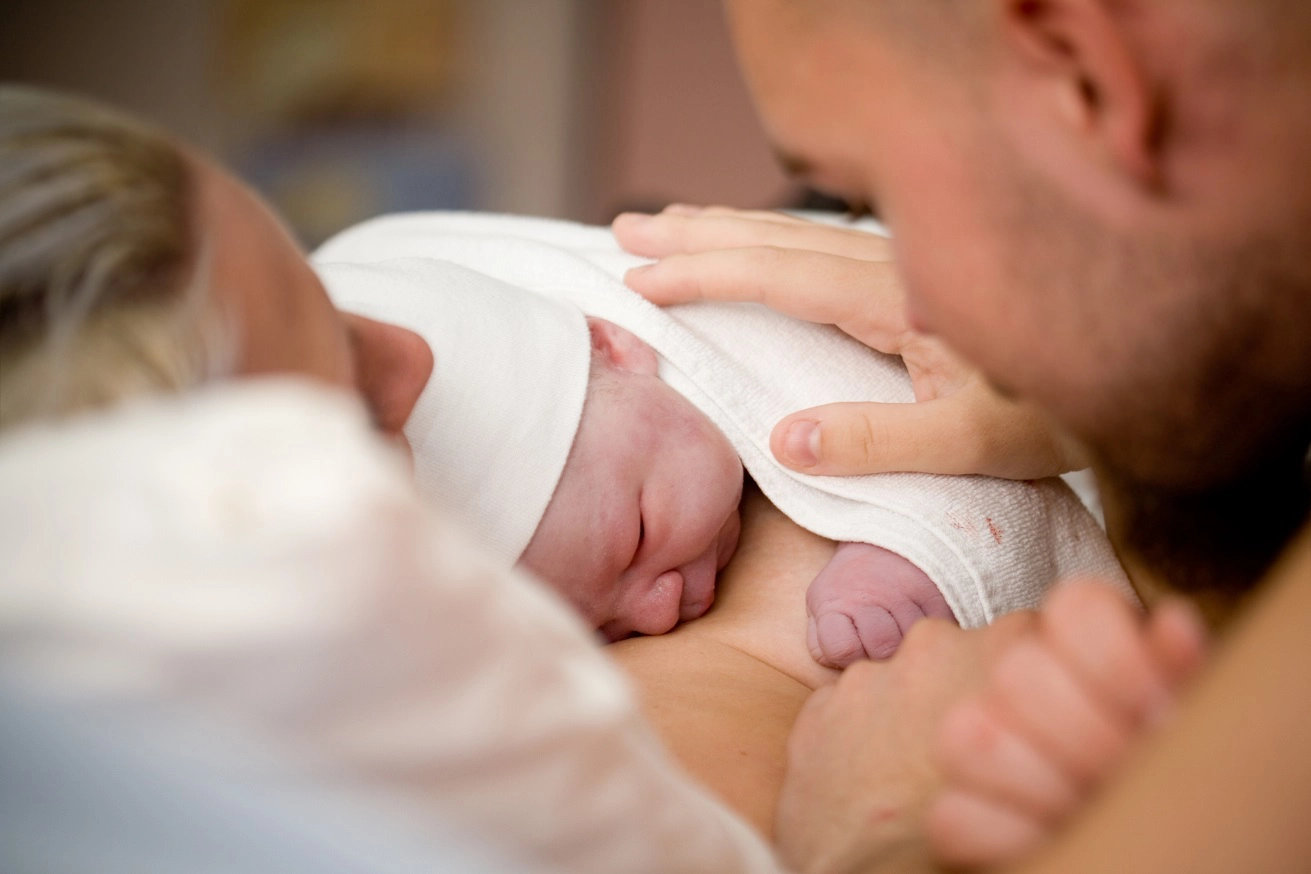FamiBlog
Kangarooing the baby after birth - what are the benefits?
Nowadays, great importance is attached to skin-to-skin contact in the first moments after birth. Kangarooing has many benefits, so you should mention in your birth plan that you want to kangaroo your baby after birth. Learn more about the benefits of kangarooing for your baby.

13 September 2023
Kangarooing a baby after birth - what is involved?
Kangarooing a baby is commonly referred to as skin-to-skin contact after birth. Kangarooing involves the baby snuggling up against the parent's bare skin, usually the breast. For years, people have pointed out the many benefits of kangarooing, both for the baby and the mother.
Kangarooing the baby after birth - advantages for the baby
Kangarooing a baby after birth has many advantages for the newborn. For the child, birth is a transition into a new, unknown world. This in turn can cause it to be anxious and cry. Kangarooing is intended to establish contact with mum or dad. It is believed that kangarooing makes babies calmer and feel more secure. It also ensures that the body temperature is maintained and reduces the risk of the baby getting cold. When the baby hears the parents' heartbeat through the skin, it has a similar feeling to that of being in the womb. It also settles with the parents' bacterial flora, which increases its immunity.
Kangarooing the baby after birth - advantages for the mother
Kangarooing a baby after birth has benefits not only for the baby but also for the mother. It is believed that the skin-to-skin contact can reduce the risk of postnatal depression. It also reduces the pain that can occur, for example, when stitching the perineum. Of course, the bond with the baby is also strengthened and the maternal instinct is activated. In addition, milk production is stimulated when the baby begins to suckle at the mother's breast. Due to the oxytocin increase during kangarooing, the uterus also contracts better after birth.
Daddy kangaroos the baby after birth
Kangarooing the baby after birth is also possible by the father. This is especially important if a caesarean section has taken place and the baby cannot be handed over immediately into the mother's skin. Then the father's role is very important. He is there to give the newborn closeness, peace and warmth. This is also important if an intervention such as an instrumental examination of the uterine cavity is required after a natural birth and the mother has to be anaesthetised and sedated. Many couples also choose to take turns kangarooing the baby to build a shared bond.
Kangarooing the baby after birth - your rights
According to the current organisational standard for perinatal care, every woman has the right to uninterrupted skin-to-skin contact for 2 hours after birth. In practice, this means that the baby should be placed on the mother's breast after birth if there are no medical contraindications. In this way, the baby can be pre-screened and its Apgar score determined. Of course, if the pregnancy is complicated or the obstetric situation requires it, the baby may first need to be examined by a neonatologist in the neonatal unit and only then handed over to the mother.
Sie interessieren sich auch für:
Intimate infections during pregnancy
Many expectant mothers struggle with the annoying symptoms of intimate infections during...
Sore throat during pregnancy
A sore throat is a relatively common condition that also affects pregnant women. However, not all...
Eating raw meat during pregnancy
During pregnancy, the expectant mother has many desires. But not all of them can be freely...
Stem cells and cord blood
Bone marrow was the primary source of stem cells (bone marrow transplantation involves...































